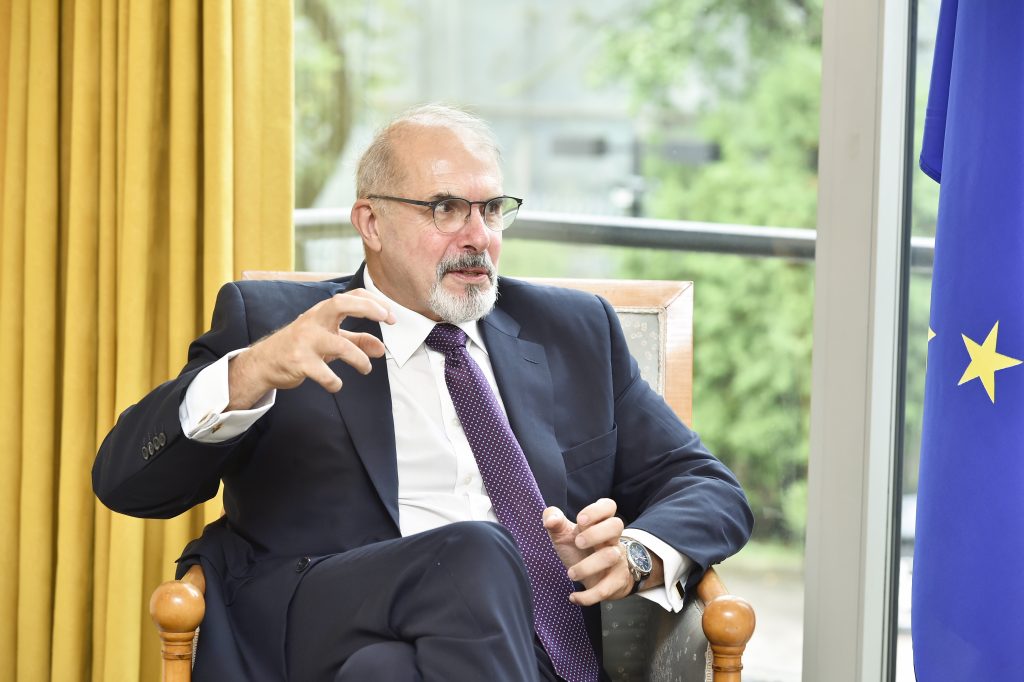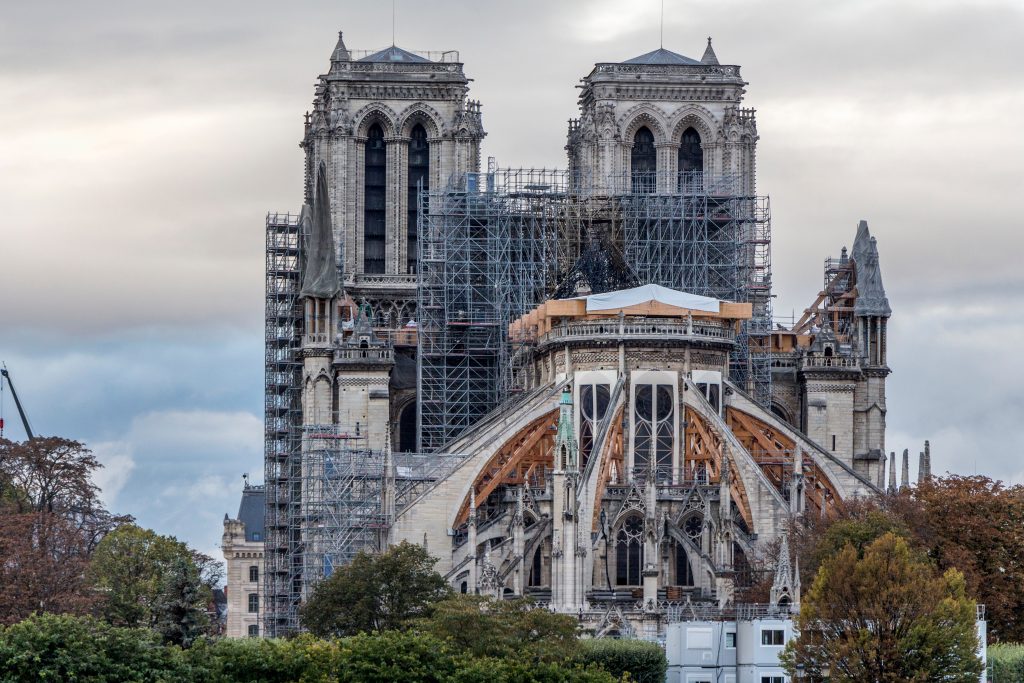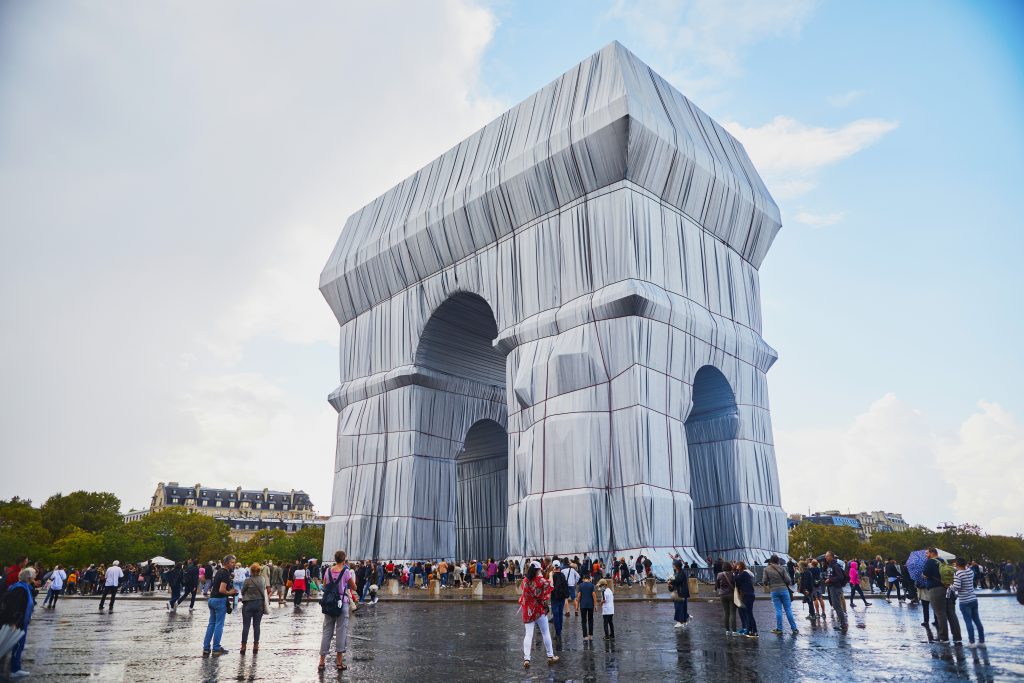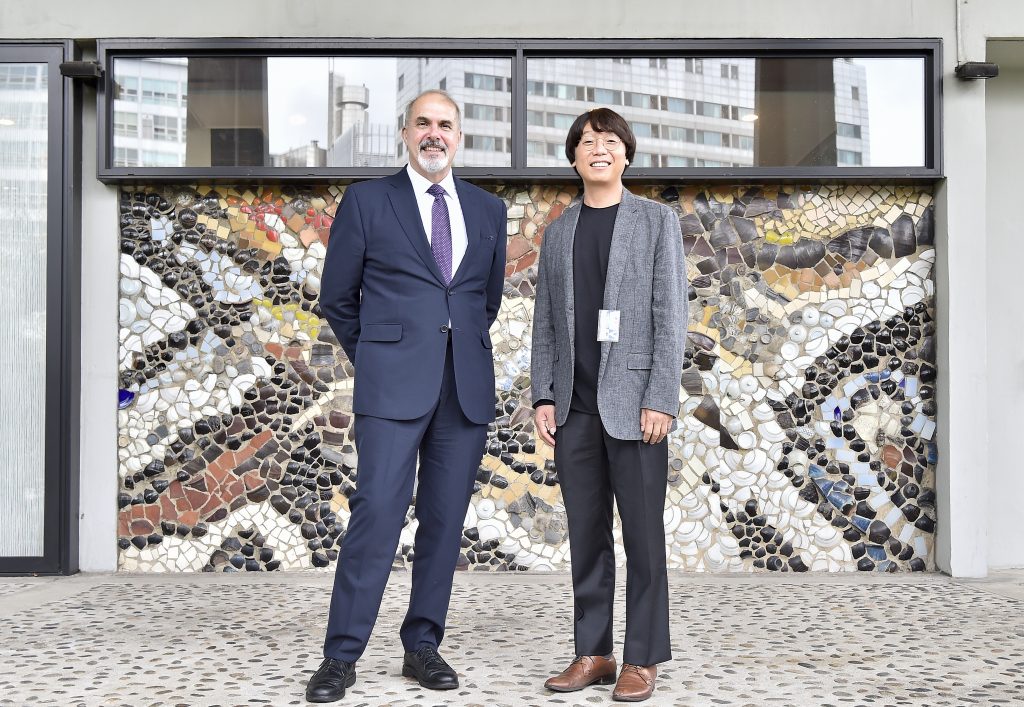Editor’s Note


France, generally recognized for its rich gastronomical heritage, takes extreme pride in their identity in its culture. Perhaps, this may be a natural phenomenon for the country with 49 UNESCO sites inscribed on the World Heritage List which includes the famous monuments such as the Palace of Versailles (Château de Versailles), Chartres Cathedral (Notre Dame de Chartres), Trium-phal Arch of the Star (‘L’arc de triomphe de l’Étoile) and Bordeaux, the capital of a world-famous wine producing region.
From where did the French affection and pride towards their history and heritages originate? Having hosted several art projects in France, LEE Myoung ho, the brand ambassador of National Research Institute of Cultural Heritage (NRICH) as well as a world famous South Korean photographer, always wondered what could be the proper answer to this question. At last, LEE has found his answer during the conversation with Philippe Lefort, a French diplomat and an Ambassador to the Republic of Korea, at the Embassy located in Seoul Korea.


LEE It’s really nice to see you again in Seoul. I believe this is our second rendez-vous since the last year’s event. You look so well.
Amb. Lefort Thank you. I’ve often heard that I look healthier after I began learning Taekwondo and eating Kimchi.
LEE Your passion about the Korean culture is very well known to the public. I heard that you have been studying the Korean language for awhile. How is that going so far?
Amb. Lefort Yes, I have began my self-study in learning the language since a year before my appointment to the current post in Seoul. It has been my personal theory that knowing the native language always helps in understanding the embedded emotions and the culture of the country. I have been on my third year of studying, but I still have a long way to go. It’s not so easy.
LEE How do you like Korea? Is it different from what you have imagined before coming here?
Amb. Lefort In fact, I have visited Korea once in 1994 before being assigned as the ambassador in 2019. Back then was very different from now. Needless to say the scenery of the cities and people’s awareness in many things has improved outstandingly. In particular, it seems that people’s awareness of responsibility in keeping the values of the cultural heritage through conservation are highly raised.
LEE That reminds me of what I thought of France as well. A few years ago, I launched a collaborative ‘Vine Project’ with the renowned French wine producer Château-laroque. At the time, I was very impressed by how sincerely French people treat art and how they show great respect for the artists. Not to mention, even the employees working at the national museums had such high pride in their professions as well. From where does French people’s sincereness and special affection for the art and culture originate?
Amb. Lefort There may be diverse reasons. First, you have to look into the political history of France. In the Middle Ages, all men showed off their power through their artistic works. That was the tradition which began from the Ancient Roman Empire. This was the origin of Mécenat1) of today as well. So, French kings always associated closely with artists and enjoyed grand artistic events and exhibitions.
LEE You mean kings such as Francis I, Louis XIV and Napoleon I?
Amb. Lefort Correct. Also agrarian history in France also influenced strong affection for art and nature as well. French are very interested in the harmony between human and nature. Hence, they are extremely particular about fabricating or causing any damage to the nature through the urbanization. This also influences the French regulations on cultural heritage preservation to be very strict. Lastly, France has developed deep interest in the cultural heritage excavation, conservation research and training in the academia since the 19th century. This is also another reason why the general public became familiar with the importance of the cultural heritage preservation and developed public awareness along with their pride.
LEE That same public interest is continuing to develop in South Korea through the National Research Institute of Cultural Heritage (NRICH). The NRICH is the only comprehensive research establishment in Korea specializing in the conservation and utilization of cultural heritage and is responsible for the various state-level projects for research, excavation, conservation and restoration.
Amb. Lefort Yes, I am very well aware of the roles of the NRICH. Actually, I would say that the bilateral ties between the Cultural Heritage Administrations of France and Korea maintained very strong. In France, we even have an archaeologists specializing in Goryeo dynasty of Korea, who is currently part of the related cultural heritage excavation projects in Gaeseong.
LEE Speaking of the cultural heritages and restorations, it reminds me of the unfortunate news of the fire breaking out at the Notre-Dame cathedral in Paris which caused severe damage to the building. This also makes me recall the 2008 fire incident that damaged the 550-year-old Namdaemun gate (officially “Sungnyemun”) in Seoul Korea. Both news were tragic and similar in certain ways, but what really fascinated me was that the French took different approach during the restoration process compared to Korea. Korea restored the burnt historic building to its most original and traditional form as possible whereas modern French architects debated whether to keep its original form or to add modern elements to the architecture. Also, the late artists Christo and Jeanne-Claude’s recent art project draped the massive Triumphal Arch of the Star monument with 25,000 square meters of recyclable polypropylene silver fabric. These approaches show that France is taking the next step to a new paradigm of preserving the history while moving on forward at the same time.






Amb. Lefort The issue of restoring the cathedral was actually very controversial. After a long debate, Notre-Dame cathedral was decided to be restored in its form from the 19th century. It is true that France may be in a transition in trying to view the cultural heritage and art in a new perspective, but still there are always heated debates when it comes to preserving the history in its original form and utilizing the cultural monument as the new forms of art. I think we have to keep in mind that culture is not something that is stopped in time. It evolves throughout the history.
LEE Thank you for your explanation. I heard that you are also interested in the Asian cultural heritages. What is your most favorite Korean cultural heritage? Can you tell us one?
Amb. Lefort There are so many of them to choose. It’s difficult to name only one. The very first place that comes to my mind is definitely ‘Haeinsa’ temple (Temple of the Ocean Mudra). This place is known to be one of the favorite spot of the first French ambassador to South Korea, Roger Chambard as well. He loved the place so much that he asked to scatter his cremains at Haeinsa after his death. The next places that comes to my mind are Suwon Hwaseong Fortress and Changdeokgung Palace which are both listed under the UNESCO World Heritage Sites. I like Changdeokgung Palace especially because not only I can fully enjoy all four seasons of the year, but it’s a place where I feel the “pungsu jiri”2) philosophy closely. Lastly, I’d choose this French Embassy building which is one of the masterpieces designed by the Korean architect, KIM Chung Up (1922~1988). The French embassy is a historic building representing Korea’s modern architecture. The building is currently under the renovation. Our goal is to not only expand the physical function of the building as an ‘Embassy’, but we plan to spotlight the great value of KIM Chung Up’s masterpiece work as well.
LEE I truly hope that this building will serve as the key to the stronger and tighter France-Korea cultural exchange relationships as well. Lastly, could you tell us about your goals during your time here?
Amb. Lefort First of all, the Embassy plans to strengthen the exchanges in various fields such as film and music industries as well as in the field of literature. Additionally, we’d like to closely share diverse scientific technological skills within the cultural heritage conservation field. In this sense, the recent relocation and expansion of the Korean Cultural Center in Paris is a symbolic achievement regarding the our bilateral exchanges. Lastly, we plan to take the lead in planning and developing various exhibitions using the Virtual Reality(VR) contents as well.




*The Korean version of this article can be read in the 2021 December issue of ‘Munhwajae-Chang’.
1) Mécenat is a general term for the corporal activities that contribute to the society and help stimulate the national economy by supporting the culture and art of a nation. The world originates from a name, Caius Cilinius Maecenas, who was a great supporter of artists such as Horace and Virgil during the era of Ancient Rome. (Source: Company Profile Korea Mecenat Association. Korea Mécénat Association. https://www.mecenat.or.kr/ko/down/eng.pdf )
2) pungsu jiri: a Korean version of Chinese feng shui


Leave a Reply